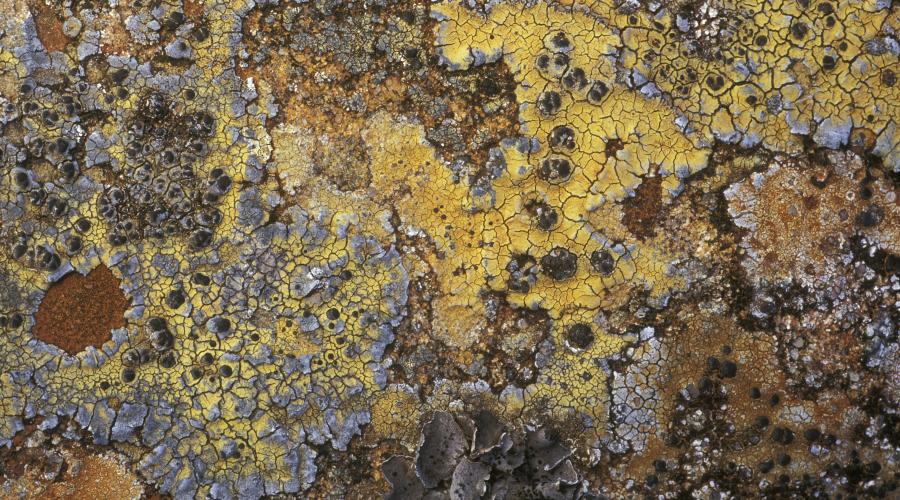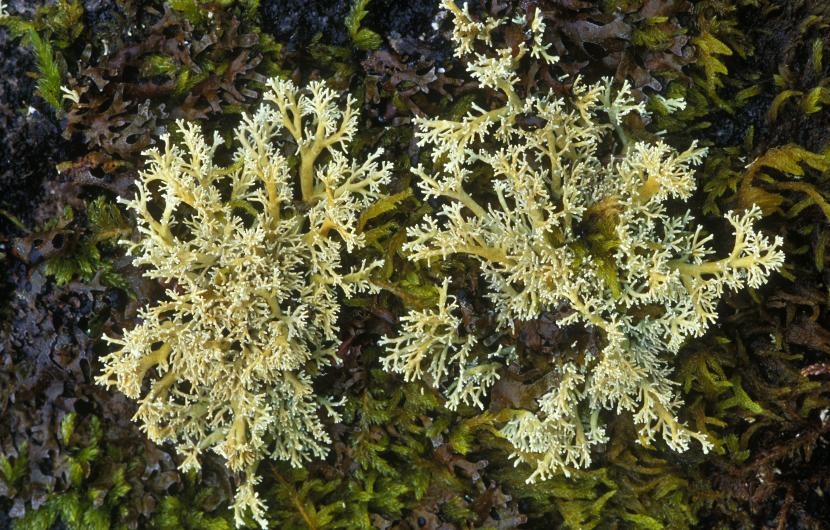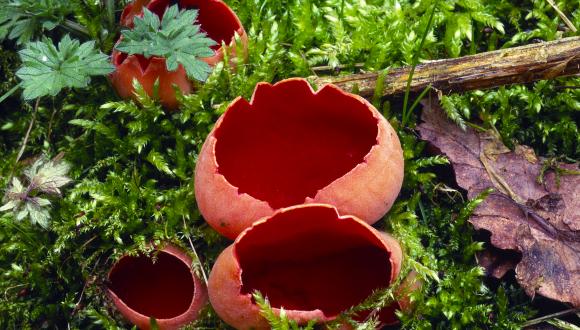
Lichens
Just over 1,500 lichen species thrive in Scotland’s clean air, diverse habitats, relatively cool summers and mild winters.
Scotland is home to a staggering variety of lichens, some of which are important on a European and even global scale. Lichens arose millions of years ago and are sensitive indicators of air pollution – many will only grow in clean air.
Each type of lichen is a partnership between at least two species, usually a fungus and an alga. The fungus provides a protective home for the alga. In return, the alga produces food for the fungus from sunshine, water and air.
Lichens add amazing colour and texture to Scotland’s surroundings – whether on ancient oaks and high mountain rocks or on mortar in walls and gravestones. They also provide a home to insects and nesting material for birds.
Some lichens smell like fish while others are used to make perfume. Harris Tweed’s characteristic orange colour was traditionally produced using a dye extracted from rock-dwelling lichens.
Lichens grow very slowly – some less than 1mm per year – and can take many years to establish in new locations. This is fine for species that live in remote and undisturbed places, but can be a problem for other species that share their habitats with us.
Threats to lichens
Some species of lichen are common and widespread. Others are rare and at risk of decline or extinction if we don’t manage our environment properly.
Some of the greatest threats are:
- loss of undisturbed habitats through land-use change
- too much or too little woodland grazing
- the swamping out of many important woodland species by the incredibly invasive non-native bush, Rhododendron ponticum
Protection of lichens
All wild plants are protected species to some degree. A number of lichens that occur in Scotland, from the goblin lights to the golden hair-lichen, have added protection.
Discover how Scotland’s wild plants and fungi are protected.
Read our guidance for planners and developers.

How you can help lichens
- Look after old trees – lichens love them. Keep trees free of ivy and other shade, and plant similar native trees nearby to provide future habitat.
- If you own or manage land, locate the important areas for lichens and consider them in your management plans.
- Get involved in recording groups to learn about lichen species and help us to better understand where they’re found.
- Take care not to let rhododendron and other invasive plants spread from your garden into nearby woodland.
- Lichens take a long time to colonise new places. If you must repair a wall, reuse the original stone with the lichens intact. If replacing fence posts, leave old posts in place as a valuable lichen habitat.




